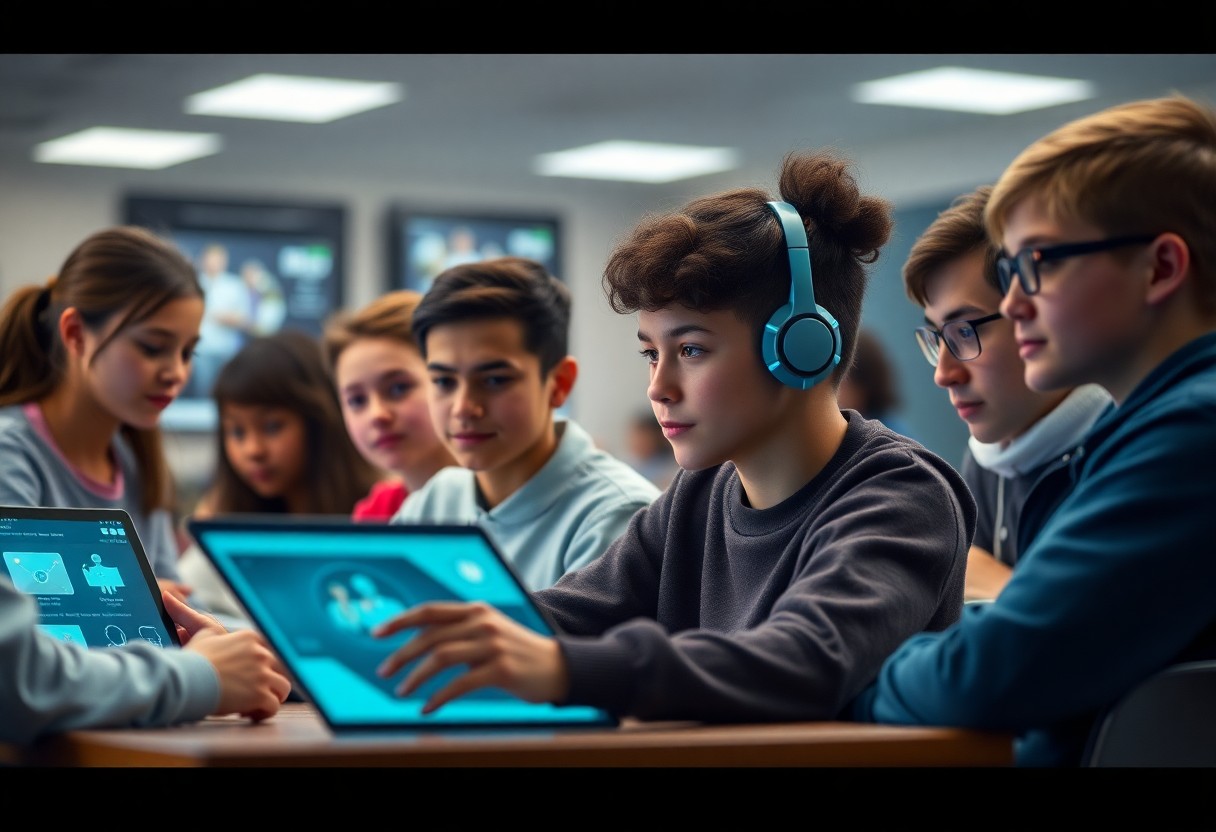It’s time to embrace the transformative power of Artificial Intelligence in education. As you navigate the evolving landscape of learning, understanding the foundational steps in AI research for Adaptive Personalized Learning (APL) will position you at the forefront of innovative education methods. This listicle outlines ten important steps that will not only enhance your teaching practices but also empower your students with tailored learning experiences. Get ready to explore how APL can revolutionize the way we educate and learn in the future.
Key Takeaways:
- Adaptive Learning: Emphasizes the need for learning systems that adapt to individual student needs, enhancing engagement and effectiveness.
- Data-Driven Insights: Harnessing analytics and behaviors to inform and shape personalized learning experiences for each learner.
- AI Technologies: Integrating advanced technologies like machine learning and natural language processing to create responsive educational environments.
- Continuous Assessment: Fostering an ongoing evaluation process that aids in monitoring progress and tailoring instructional strategies accordingly.
- Collaborative Learning: Highlighting the importance of group interactions in AI-driven learning experiences to promote social skills and teamwork.
Define Learning Objectives Clearly
While launching on the journey of adaptive personalized learning (APL), one of the first steps you must take is to define your learning objectives clearly. Establishing specific, measurable, achievable, relevant, and time-bound (SMART) objectives will serve as a roadmap for your educational initiatives. When your goals are well-defined, it becomes easier to tailor the learning experience to meet the individual needs and expectations of each learner.
To start, you should consider what you want your learners to achieve by the end of their learning experience. Ask yourself questions like: What skills should they develop? What knowledge do they need to acquire? By delineating these objectives, you provide a structured framework that guides both content creation and assessment methods. This clarity not only enhances the learners’ focus but also allows for more precise adjustments as you analyze their progress.
Additionally, consider involving your learners in this process. Engaging them in defining their own objectives can lead to increased motivation and investment in their own learning. When learners recognize the value and relevance of their goals, it fosters a sense of ownership that is important for effective APL environments.
It’s also important to ensure that your objectives are aligned with the larger educational standards and competencies within your field. By keeping your goals relevant to industry benchmarks or accreditation requirements, you ensure that your adaptive learning strategies are both effective and recognized. This alignment will not only help streamline the learning process but also enhance the credibility of your program among stakeholders.
Summing up, taking the time to define clear learning objectives is a significant step that will influence all subsequent phases of your adaptive personalized learning strategy. By setting solid foundations from the outset, you will enable a more effective, flexible, and meaningful learning experience for all participants involved.
Collect and Analyze Data
Before you launch on the journey of implementing adaptive personalized learning (APL) through artificial intelligence, it is imperative to understand the significance of collecting and analyzing data effectively. Your initial focus should be on the types of data that you can gather, which will influence the performance of APL systems.
First, consider gathering quantitative data, such as test scores, attendance records, and engagement metrics. These numbers provide you with a foundational understanding of how learners are progressing. However, it’s also important to collect qualitative data, which can include student feedback, interview responses, and observational information. This qualitative aspect adds depth to your analysis and can highlight factors that numbers alone cannot reveal.
Once you have your data, the next step is to employ analytical techniques that will allow you to extract meaningful insights. Statistical analysis can help you identify patterns and correlations, establishing benchmarks for performance and engagement. Machine learning algorithms can also play a role here, enabling you to predict outcomes based on historical data. By leveraging these techniques, you can uncover trends that inform your decisions regarding content delivery and instructional strategies.
Continuously monitoring your data collection and analysis process is vital. As you gather more data over time, you will refine your understanding of learner pathways and preferences. This iterative analysis allows you to make adjustments to your APL system, optimizing the learning experience to align with individual learner needs.
Moreover, be mindful of the ethical considerations related to data collection. Safeguarding student privacy and maintaining data security are paramount. Ensure that your collection methods comply with relevant regulations and that students are informed about how their data will be used. Establishing trust in this process not only enhances your institutional integrity but also fosters a positive learning environment.
To conclude, your efforts in collecting and analyzing data will serve as the backbone of your adaptive personalized learning initiative. By effectively harnessing both quantitative and qualitative insights, you will be better equipped to understand learner requirements, predict their future needs, and ultimately provide a more enriching educational experience.

Develop Adaptive Algorithms
Any effective Adaptive Personalized Learning (APL) system relies on robust adaptive algorithms that can tailor educational experiences to fit individual learner needs. As you initiate on your journey of developing these algorithms, consider the fundamental principles that underpin their functionality. The primary goal is to create an environment that continuously evaluates and adapts to your learners’ preferences, prior knowledge, and progress.
To begin, it’s imperative to gather data on your learners. This includes not only their academic performance but also their engagement levels, learning styles, and preferences for content delivery. Effective algorithms can aggregate this data and analyze it to develop personalized pathways. You’re looking to identify patterns in how different learners interact with the material, which can inform how you adapt learning experiences over time.
Machine learning techniques play a significant role in developing adaptive algorithms. By employing these techniques, you can enable your system to learn from historical data and make predictions about future learner behavior. For instance, reinforcement learning can optimize educational interventions by analyzing the outcomes of different strategies and adjusting recommendations accordingly. The more data you provide your algorithms, the smarter and more accurate they become in personalizing the learning experience.
Furthermore, consider implementing collaborative filtering and recommendation systems, commonly used in e-commerce and streaming services, to suggest content based on similarities between users. By identifying learners with similar behaviors or characteristics, you can suggest resources that may resonate with them, thereby enhancing engagement and improving learning outcomes.
In developing these algorithms, your focus should also include ensuring your system can scale effectively. As your learner base grows, your algorithms must manage an increased volume of data while maintaining performance. This requires crafting algorithms that can efficiently process large datasets and continue to deliver personalized experiences without lagging or overwhelming users.
Lastly, validation and continuous improvement of your algorithms are paramount. You should regularly assess their effectiveness in improving learning outcomes, and gather feedback from your users to refine the adaptive mechanisms. This iterative approach not only enhances the relevance of the learning materials offered but also ensures that the system evolves alongside changes in educational standards and learner expectations.
By prioritizing the development of adaptive algorithms, you are laying a solid foundation for effective APL systems that meet the diverse needs of learners in today’s fast-evolving educational landscape.
Implement User Feedback Mechanisms
If you want to enhance your Adaptive Personalized Learning (APL) system, implementing user feedback mechanisms is key. This approach allows you to gather direct insights from learners about their experiences, preferences, and challenges. By actively engaging with your users, you can make informed decisions that fine-tune and optimize their learning journey.
User feedback mechanisms can take various forms, such as surveys, questionnaires, focus groups, and feedback forms integrated within the platform. One effective method is to incorporate real-time feedback options, allowing learners to share their thoughts immediately after experiencing specific content or activities. This immediacy can yield more accurate insights about your content’s effectiveness and learner engagement.
In addition to traditional feedback methods, consider leveraging analytics tools that track user interactions with your APL system. Analyzing data such as time spent on tasks, completion rates, and user navigation paths can help you identify patterns and areas needing improvement. When you combine qualitative feedback with quantitative analytics, you gain a comprehensive understanding of your learners’ needs and preferences.
Once you collect feedback, it is imperative to synthesize and analyze the information effectively. This analysis will enable you to pinpoint common themes and recurring suggestions from your users. By prioritizing these insights, you can align your APL system with the specific needs of your learners, ultimately enhancing their experience and outcomes.
Moreover, communicating transparently with your users about how their feedback is being implemented can foster a sense of community and trust. When learners see that their input directly influences changes in the system, they are more likely to continue providing meaningful feedback in the future.
Therefore, by implementing user feedback mechanisms, you empower your learners and create a responsive learning environment. Encouraging open communication and actively soliciting input not only improves the effectiveness of your APL system but also builds a more engaged learner community. This iterative process of feedback and improvement is imperative to keep your APL system dynamic and closely aligned with learner needs.
Personalize Content Delivery
Assuming you are engaged in developing an adaptive personalized learning system, one of the most significant aspects you will focus on is how to personalize content delivery. This step is pivotal in ensuring that your learners receive tailored educational experiences that align with their unique preferences, pacing, and learning styles. Through effective personalization, you can enhance engagement and improve overall learning outcomes.
To achieve personalized content delivery, you need to collect and analyze data on each learner’s interactions, performance, and preferences. This data can come from various sources, such as quizzes, assignments, and resource usage. By leveraging AI and machine learning algorithms, you can identify patterns and insights that inform how best to present content to each learner. For instance, if your data shows that a particular student excels in visual learning, you can prioritize video content or infographics over traditional text-based materials for them.
Furthermore, consider implementing adaptive pathways within your learning platform. These pathways allow the content to adjust dynamically based on the learner’s progress. If a student struggles with a specific concept, the system can provide additional resources, practice exercises, or alternative explanations that focus on that area. Conversely, if a learner demonstrates mastery, you can accelerate their learning by introducing more challenging material. This level of adaptability not only supports individual learning journeys but also fosters a sense of achievement and motivation.
Another key aspect of personalized content delivery is the timing and frequency of the materials presented. By analyzing learner behavior, you can determine the optimal times for delivering certain types of content. For example, some learners may prefer to engage with complex materials during their peak cognitive hours, while others might thrive on frequent short bursts of content throughout the day. By tailoring the timing of your content delivery, you can further enhance retention and understanding.
Lastly, incorporate feedback mechanisms that allow learners to express their preferences regarding content delivery. By soliciting input on factors such as multimedia usage, pacing, and types of assessments, you can continually refine the learning experience. This iterative process not only empowers your learners but also allows you to stay responsive to their evolving needs.
In the aggregate, personalizing content delivery involves a multi-faceted approach that leverages data analytics, adaptive pathways, timing strategies, and learner feedback. This creates a dynamic and responsive learning environment that caters to the diverse needs of your learners, ultimately driving better engagement and outcomes in your adaptive personalized learning initiatives.
Integrate Diverse Learning Styles
Some learners thrive in auditory environments, soaking up information through lectures and discussions, while others may prefer visual aids that help them grasp concepts through images and diagrams. As you probe the world of Adaptive Personalized Learning (APL), understanding the integration of diverse learning styles becomes imperative for your success and that of your learners.
To effectively accommodate these varying preferences, you should consider harnessing the power of AI to analyze each learner’s unique cognitive profile. AI algorithms can evaluate past performance data, engagement levels, and feedback to identify which methods resonate most with individual learners. This allows you to tailor content delivery that not only engages but also optimally supports the different ways your audience processes information.
In your APL strategy, aim to incorporate a blend of instructional methods, such as multimedia presentations, interactive simulations, and collaborative projects. Offering choices in how learners engage with material empowers them to select the approach that suits them best. This not only fosters a sense of agency but also enhances motivation and retention of knowledge.
Additionally, regularly reflect on the effectiveness of these various techniques. By utilizing analytics, you can gauge which learning styles are yielding the best outcomes in terms of skill acquisition and comprehension. This iterative process not only informs your immediate decisions but also sets the stage for continuous improvement in your instructional design.
By integrating diverse learning styles into your APL framework, you will create a more inclusive and responsive learning environment that meets the needs of all learners. As you move forward, stay committed to adaptability and responsiveness, ensuring that your approach evolves alongside the learners you aim to support.
Monitor Progress Continuously
To ensure that your adaptive personalized learning (APL) strategy is effective, it’s vital to monitor progress continuously. This process involves systematically tracking learners’ performance, engagement, and understanding to make timely adjustments to their learning paths. By keeping a close eye on these metrics, you can identify trends and make data-informed decisions that enhance the learning experience.
To initiate this continuous monitoring, establish clear learning objectives and key performance indicators (KPIs) that align with those goals. As you gather data from assessments, quizzes, and interactive learning activities, you’ll gain insights into the strengths and weaknesses of your learners. This information is necessary not only for adapting content but also for providing feedback that motivates and encourages further development.
Utilizing advanced analytical tools and AI algorithms can streamline the process of tracking progress. These tools can analyze vast amounts of data in real-time, detecting changes in performance and engagement that the human eye might miss. By leveraging technology, you can generate reports that offer a comprehensive view of each learner’s journey, enabling you to intervene when necessary and offer personalized support tailored to their unique needs.
In addition to quantitative data, qualitative feedback from learners is also important. Encourage open lines of communication where learners can share their thoughts on the content, challenges, and their overall learning experience. This feedback will help you refine the APL approach, ensuring that it remains relevant and responsive to the needs of each individual.
Finally, make it a practice to review the progress data regularly. By doing so, you’ll be able to spot patterns over time and assess the overall efficacy of your adaptive learning strategies. This ongoing evaluation not only strengthens your program but also fosters a culture of continuous improvement that benefits both you and your learners.
Foster Collaborative Learning Environments
For effective adaptive personalized learning (APL) to take root, you need to foster collaborative learning environments that encourage interaction and idea-sharing among learners. These environments not only enhance individual learning experiences but also promote a sense of community and belonging. When you create opportunities for learners to engage with one another, you facilitate deeper understanding and retention of knowledge.
Start by incorporating group projects and discussions into your learning framework. This can be achieved through online platforms where learners can work together, share resources, and provide feedback on each other’s contributions. By doing so, you enable learners to benefit from diverse perspectives, which enriches the learning experience. Collaborative activities can be designed to allow each individual to bring their unique skills to the table, thereby fostering a sense of value and inclusivity.
Utilize technology to enhance collaboration further. Artificial Intelligence can play a pivotal role in this aspect by analyzing learners’ interactions and preferences, thereby suggesting optimal group compositions and project topics. You can deploy tools that facilitate real-time collaboration, such as video conferencing and shared digital workspaces, ensuring that every participant is actively involved, regardless of their physical location.
Moreover, encourage peer-to-peer learning by creating mentorship opportunities within the collaborative learning environment. Pairing novice learners with more experienced peers allows for knowledge transfer and helps to build confidence. By empowering your learners to teach and share insights, you nurture an atmosphere of mutual respect and cooperation.
Promoting a culture of feedback is necessary in collaborative learning. Encourage your learners to provide constructive criticism not only to their peers but also to the learning process itself. This practice helps you to refine instructional methods and adapt them to meet the evolving needs of your learners. Engaging in open dialogues about what works and what doesn’t creates a sense of ownership and motivates learners to take charge of their own educational journeys.
In summarization, by fostering collaborative learning environments, you enable deeper, more engaging experiences that adapt to the needs of each learner. Through thoughtful implementation of technology and peer interactions, you can create an exceptional framework for individualized learning that thrives on cooperation and shared purpose.
Ensure Data Privacy and Security
Once again, as you venture into Adaptive Personalized Learning (APL) through AI research, it is imperative to emphasize the significance of ensuring data privacy and security. In the digital age, safeguarding sensitive information is not just a regulatory requirement; it’s a fundamental aspect of building trust with learners and educators alike.
First and foremost, you need to recognize that the data collected in APL systems can include personally identifiable information (PII), learning preferences, and even behavioral patterns. It’s your responsibility to implement stringent data protection measures. This includes encryption methods to secure data both in transit and at rest, ensuring that any unauthorized access is effectively mitigated.
Next, consider adopting robust access controls. Establish who can view or manipulate data within your systems. You should employ role-based access, ensuring that only those who need certain data for their functions can access it. Logging and monitoring access attempts can also provide an extra layer of oversight, helping to prevent data breaches while fostering accountability.
Additionally, it’s advisable to conduct regular audits of your data security practices. Assess whether your current systems meet the latest standards in data protection and privacy regulations, such as the GDPR or CCPA. Staying compliant not only protects you legally but also enhances your credibility among users, showing that you take their privacy seriously.
Furthermore, you must educate stakeholders about the importance of data privacy. Foster a culture of data responsibility among your team members to ensure that everyone understands their role in protecting learner information. Regular training sessions can equip your staff with the knowledge and skills they need to handle data properly.
Lastly, consider establishing transparent policies regarding data usage and storage. Inform your users about what data you collect, how it will be used, and how long it will be stored. Providing clear options for consent and the ability for users to opt-out can empower learners and parents alike, making them more comfortable with engaging in personalized learning experiences.
In the aggregate, as you progress in your AI research for Adaptive Personalized Learning, prioritizing data privacy and security is imperative. By implementing strong measures, educating your team, and maintaining transparency, you will not only protect valuable information but also instill confidence in the learning environment you create.
Conclusion
Following this exploration of the future of learning through Adaptive Personalized Learning (APL), it’s clear that the integration of AI research into educational environments will significantly transform how you approach teaching and learning. By adopting the 10 necessary steps highlighted, you can harness the power of AI to create tailored learning experiences that address individual needs and preferences. This not only enhances engagement and retention but also empowers learners to take ownership of their educational journeys. Your proactive involvement in these advancements will ultimately Influence the landscape of education, making it more inclusive and effective for diverse learners.
As you move forward, it is necessary to stay informed about emerging technologies and methodologies in AI research. By continuously evolving your strategies and practices, you can ensure that your educational approaches remain aligned with the latest advancements in personalized learning. Embracing these changes will not only enrich your own understanding but will also benefit your learners, equipping them with the skills they need to thrive in an increasingly complex world. The future of learning is unfolding, and your engagement with these AI-driven tools will play a significant role in shaping that future.
FAQ
Q: What is Adaptive Personalized Learning (APL)?
A: Adaptive Personalized Learning (APL) is an educational approach that utilizes technology, including artificial intelligence, to tailor learning experiences based on an individual learner’s needs, preferences, and abilities. This method aims to optimize the learning process by providing personalized content and feedback, ensuring that learners progress at their own pace and in their own unique way.
Q: How does AI enhance the Future of Learning in APL?
A: AI enhances the Future of Learning in APL by enabling the analysis of vast amounts of data related to student performance, learning styles, and engagement. Machine learning algorithms can identify patterns and predict the best learning paths for each student, facilitating a more customized educational experience. Additionally, AI can adapt in real-time to a learner’s performance, providing immediate support or challenges to improve understanding and retention.
Q: What are the 10 crucial steps in AI research for APL?
A: The 10 crucial steps in AI research for Adaptive Personalized Learning include: 1) Identifying learning objectives; 2) Collecting and analyzing data on learner interactions; 3) Developing models for learner behavior; 4) Creating adaptive content; 5) Implementing real-time feedback mechanisms; 6) Testing and refining algorithms; 7) Integrating AI with existing educational frameworks; 8) Ensuring data privacy and security; 9) Engaging stakeholders, including educators; and 10) Evaluating the impact of AI on learning outcomes and experiences.
Q: What role do educators play in the implementation of APL with AI technologies?
A: Educators play a vital role in the implementation of APL with AI technologies by providing insights into curriculum design, understanding the context of student needs, and supporting the engagement of students with personalized learning materials. They also serve as facilitators, guiding learners through their educational journeys and interpreting the data generated by AI systems to enhance teaching strategies and foster an inclusive learning environment.
Q: What challenges might arise during the development and integration of APL systems with AI?
A: Several challenges may arise during the development and integration of APL systems with AI, including technical hurdles such as the need for robust data infrastructure, potential biases in AI algorithms impacting fairness, and the requirement for significant investment in training and resources. Additionally, there may be resistance to change from traditional educational practices, concerns about data privacy and security, and the need to ensure that the technology is accessible for all learners, regardless of background or ability.




